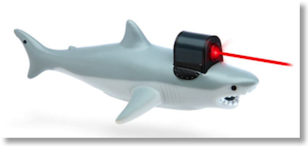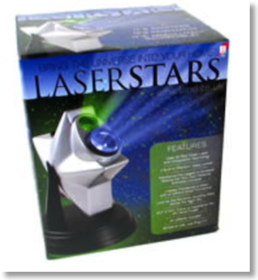Home
A comprehensive resource for safe and responsible laser use
EU: Consumer lasers to be restricted to Class 2 (1 mW) maximum within 24 months
(For reference, the full title of the 5 Feb 2014 document is 2014/59/EU: Commission Decision of 5 February 2014 on the safety requirements to be met by European standards for consumer laser products pursuant to Directive 2001/95/EC of the European Parliament and of the Council on general product safety Text with EEA relevance. The document is online here.)
Timeframe and who is affected
The EU decision does not appear to directly affect laser product sales or access at this time (early 2014). Instead, it applies to European safety standards "pursuant to Directive 2001/95/EC”, the General Product Safety Directive. These standards would need to be updated to conform with the 5 Feb 2014 EC decision. The expected time is about 24 months.
A member of the IEC Technical Committee 76, the group which sets laser equipment safety standards, told LaserPointerSafety.com that "the standardization organizations are about to be requested to produce a new standard or amend an existing one, implementing/specifying such new requirements. The deadline for an amended or new standard seems to be within 24 months…. For now, it seems that the General Product Safety Directive, the Low Voltage Directive, and the Radio & Telecommunications Terminal Equipment Directive are the targeted ones.”
Once one or more standards are updated to meet the requirements of the 5 Feb 2014 EU decision, the new requirements would then be legally enforceable in the European Union.
According to the EU decision, for lasers which appeal to children, the laser "shall not cause damage to the eyes or the skin in case of any exposure to laser radiation that could occur under any conditions of use, including deliberate long-term exposure with optical viewing instruments." This would restrict any children's laser product with an accessible beam over Class 1 (roughly 0.039 milliwatts).
Toys are already required to be laser safe (Class 1) via 2009/48/EC, the Toy Safety Directive. It states “Toys must be designed and manufactured in such a way that they do not present any health hazards or risk of injury to eyes or skin from lasers, light-emitting diodes (LEDs) or any other type of radiation.” The 5 Feb 2014 EU decision gives more specifics, stating that a toy must be laser safe “under any conditions of use” including loupe, binocular or telescopic viewing.
Requirements for all other consumer laser products
For all other consumer laser products, they "shall not cause damage to the eyes or unintended damage to the skin in case of any exposure to laser radiation that could occur under normal or reasonably foreseeable conditions of use, including momentary accidental or unintentional exposure..." It is not clear whether Class 3R lasers (between 1 and 5 milliwatts) would be included in this definition. It would hinge on whether the slight increase in damage potential between Class 2 (less than 1 mW) and Class 3R (1-5 mW) is considered to fall within the EU's definition.
In addition, for consumer laser products, "any intended damage to the skin caused by consumer laser products shall be compatible with a high level of consumer health and safety protection.”
Implementation via IEC 60825-1
The decision states that product conformity with the safety requirements “shall be achieved by technical means”, which appears to refer to the European standard for laser products, “IEC/EN 60825-1, Safety of laser products – Part 1: Equipment classification and requirements.” That document classifies laser products based upon hazard class.
Analysis: Definitions and details
As with many laws and regulations, key implementation details may depend on how wording is interpreted by the European standards-making organizations.
For example, the EU decision specifically mentions "laser products, in particular hand-held, battery-powered laser pointers..." But the remainder of the decision does not make a distinction between pointers and handhelds, and other consumer laser products such as wall-powered devices and laser projectors. It is therefore likely that all laser products in a given class will be affected.
The EU defines a consumer laser product as "any product or assembly of components that: (a) is intended for consumers, or [is] likely to be used by consumers under reasonably foreseeable conditions even if not intended for them and (b) constitutes or incorporates a laser or laser system and during operation permits access to laser radiation."
Based on this, a device such as a CD player or laser printer with an embedded laser that does not allow access to laser radiation during operation, would not fall under the EU's directive.
It is not clear what type of laser would be "not intended for" consumers yet would be likely to be used by consumers under reasonably foreseeable conditions.
Adult laser gadgets may be restricted due to child appeal
With regard to the "child appealing consumer product", the EU defines this as "a consumer laser product that (a) resembles, by virtue of its form or design, anything that is commonly recognized as being appealing to, or intended for use by, children or (b) has any other feature or characteristic, not necessary for the function of the product, that is likely to be appealing to children."

ThinkGeek’s shark-shaped laser pointer. The beam brightness is grossly exaggerated in this photo-illustration; in reality the Class 1 (1 mW) beam would not be visible in a lit room, and would be very faint even in a dark room.
This could affect products such as the Think Geek "Shark with Frickin' Laser Pointer." While primarily intended for adults who understand the humorous reference to the "Austin Powers" movies, the device could be considered to have a characteristic not necessary for the function of the product (pointing) that is likely to be appealing to children.

The Funtime “Laser Stars Projector”, sold online at retailers such as Otherlandtoys.uk
Also affected could be laser star projectors. These use a diffraction grating to split a single laser beam into hundreds or thousands of tiny “beamlets.” Even if each beamlet is below Class 1 at the aperture, the EU definition states that a toy must be safe “under any conditions of use, including deliberate long-term exposure with optical viewing instruments." It could be possible that there is a condition of use that re-gathers or re-focuses the beamlets into laser light above Class 1. The toy would then be in violation of the 5 Feb 2014 EU decision.
Thanks to Dr. Martin Lindgren, Swedish Radiation Safety Authority, for bringing this to our attention